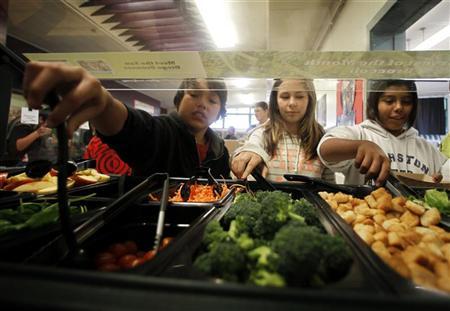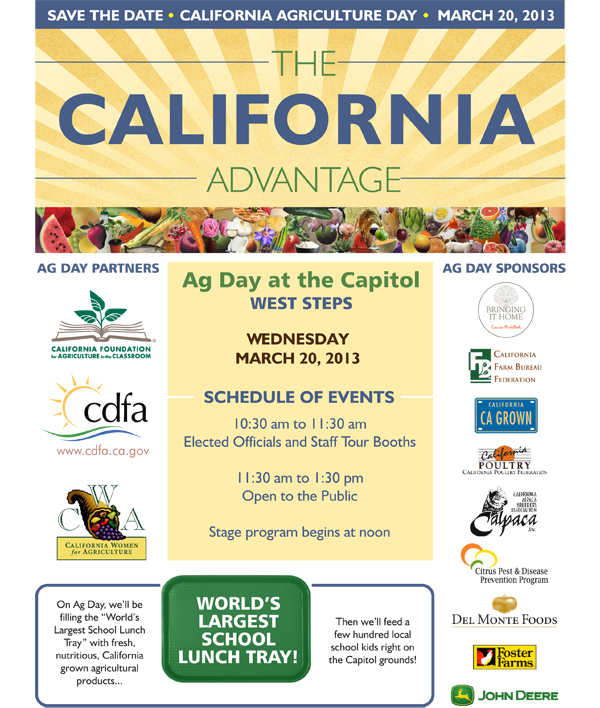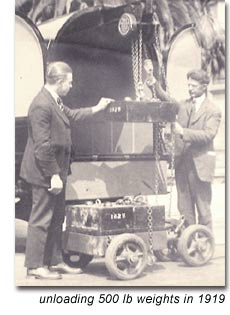
http://www.fresnobee.com/2013/03/05/3200415/fresno-food-expo-showcases-new.html
A fiery but flavorful peanut hot sauce, raspberry-flavored sangria and finger-shaped limes are among the more than 50 new products being showcased at this year’s Fresno Food Expo.
The Expo will be held March 14 at the Fresno Convention Center and is the only food trade show focusing solely on San Joaquin Valley producers. Last year, the event attracted nearly 100 of the Valley’s best food makers and more than 400 buyers from major retailers to restaurant owners.
The public is also invited to an evening event, where you can sample the best of what the Valley’s specialty food makers have to offer. And this year, participants can vote for their favorite new products.
The winner of the People’s Choice awards will be announced March 14. Voting can be done on Facebook — www.Facebook.com/FresnoFoodExpo — or by visiting the expo’s website: www.FresnoFoodExpo.com.
A panel of food industry judges also will select an “Industry Award” winner.
During a recent food tasting preview, the media and food industry officials got a sneak peek at the 55 new products.
Among the new products …
— Abel Arellano’s Fresno-based Mexican hot peanut sauce, called Sayula, packs a real punch. The well-balanced and flavorful sauce gets its intense and lasting heat from the small but potent chile de arbol. The light-colored sauce pairs well with salty snack foods or goes well in soups, sauces and with eggs.
— Not far behind on the heat index is a line of spicy raisins from Raisin Valley Farms in Kerman. The raisins come coated in spicy chocolate and chile powder and lime. Be prepared for a slow burning sensation in your mouth.
— Three Tulare and Kings counties dairy operators — Rosa Brothers Milk Co., Top O’ The Morn Farms and Dairy Goddess — will have milk and cheese to taste. The Dairy Goddess (Barbara Martin) produces a non-homogenized milk that has a clean, refreshing taste. And she has added new flavors of her soft, spreadable cheese: a bacon and ranch dressing flavor and a sweet flavor, mixing white chocolate, pistachios and cranberry.
— Vincent Ricchiuti, director of operations for Clovis-based P-R Farms, the makers of Enzo Oil, has introduced several products of their organic extra virgin olive oil, including infused basil, garlic and Meyer lemon. The lemon-infused oil has a smooth taste that works well as a salad dressing or brushed on grilled fish.
— The chipotle beer-battered cheese curds from Traver-based Vintage Cheese Co. are similar to mozzarella sticks, but are shorter and much more flavorful. Cheese curds are byproducts of the cheese-making process, and the folks at Vintage have lightly battered them in chipotle, sage and white cheddar flavors that don’t overpower the cheese.
— Finger limes are bizarre little fruits that are shaped like fingers, then reveal tiny green balls when snapped open. The tangy “citrus caviar” is extremely versatile, and may be added to vanilla ice cream or salads, used to top sushi or swirled into Champagne and cocktails. Visalia-area Phillips Farms sells them online and exports them to Europe.
— The Seriously Hot Headed Dutchman cheese is a Gouda with an explosive smoky flavor that isn’t overly hot. Created by 9th Street Cheese, it’s rubbed with a local olive oil and roasted peppers. The cheese, along with the milder Hot Headed Dutchman, is new and sold only at 9th Street Cheese’s store in Fowler.
— P*DE*Q, the Fresno maker of little balls of tapioca cheese bread, has introduced its fifth flavor: bacon. It’s crispy on the outside and chewy on the inside and packed with decent-sized hunks of warm bacon. The gluten-free bread is meant to be a snack and/or a breakfast item.
— The True Temptation Raspberry Romance sangria was recently created by the San Joaquin Wine Co. in Madera. It’s a blend of three red wines infused with a raspberry concentrate. You can drink it alone, or combined with Champagne, lemon-lime or club soda to create a cocktail.
 As the nation and California prepare to celebrate their annual Ag days (March 19 and 20), the produce blog The Perishable Pundit has issued a special edition with a series of reports on school salad bars. It highlights the United Fresh Produce Association’s campaign to increase their numbers, called Let’s Move Salad Bars to Schools.
As the nation and California prepare to celebrate their annual Ag days (March 19 and 20), the produce blog The Perishable Pundit has issued a special edition with a series of reports on school salad bars. It highlights the United Fresh Produce Association’s campaign to increase their numbers, called Let’s Move Salad Bars to Schools.






